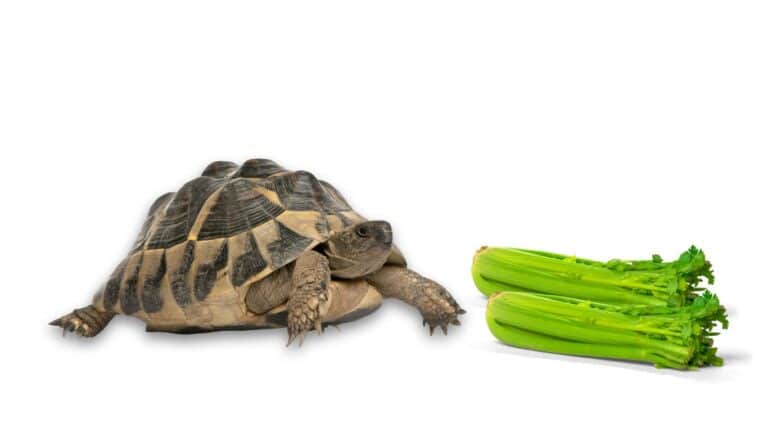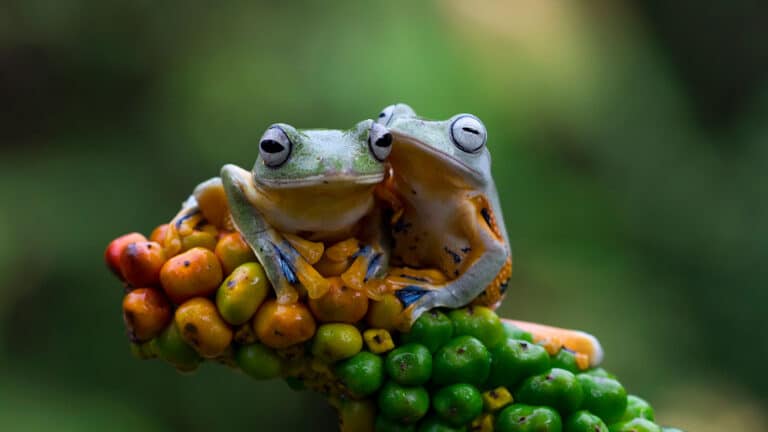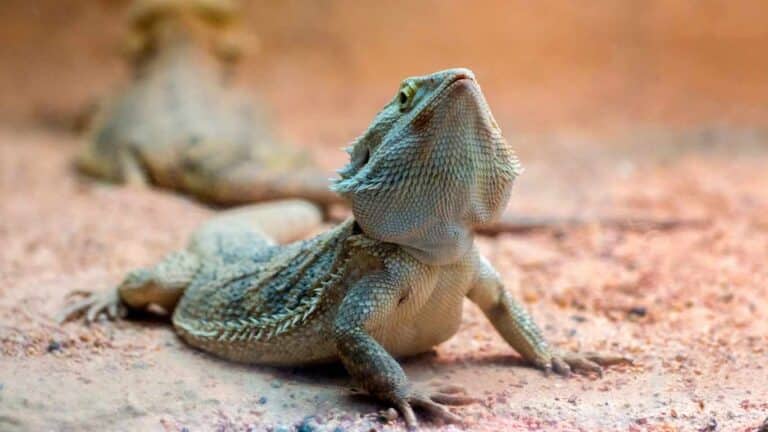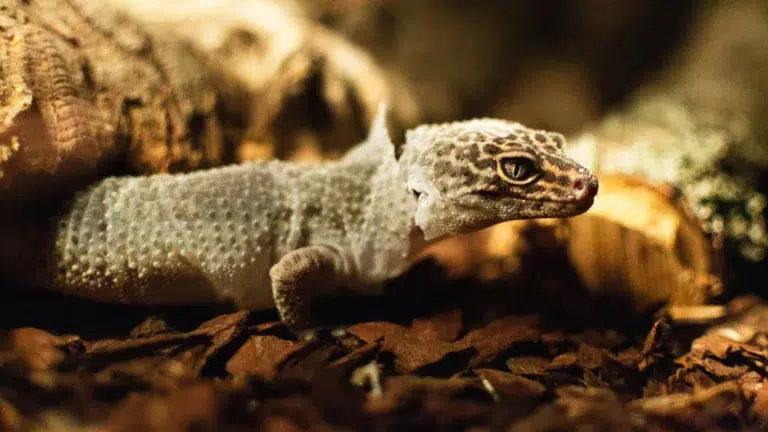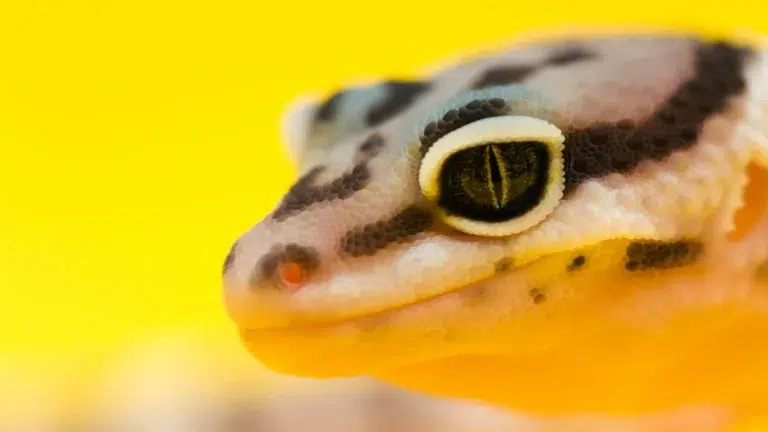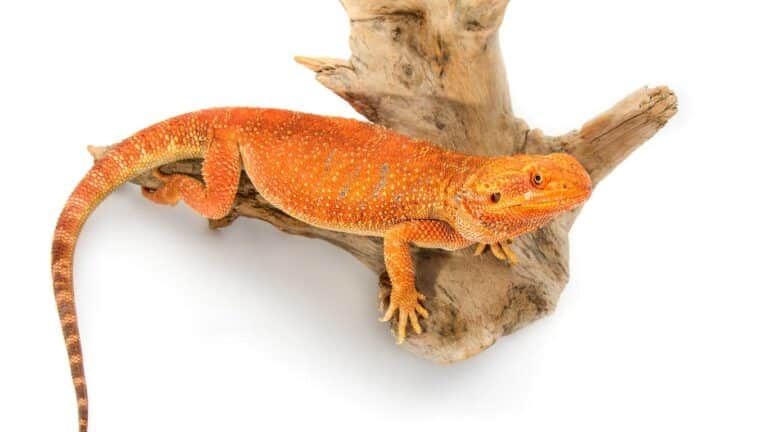Welcome to your beginner’s guide to creating an American Green Tree Frog habitat perfect habitat at home! These fascinating amphibians are native to the southeastern United States and can be found near bogs, ponds, and streams. With their white underside and distinctive pale-yellow stripe, green tree frogs are a beautiful addition to any home.
Creating a suitable habitat is essential for the health and well-being of your green tree frogs. From the right enclosure to proper temperature, humidity, and substrate, we’ll cover everything you need to know to create the ideal habitat for your green tree frog friends.
Essential Highlights To American Green Tree Frog Habitat:
Green Tree Frog Species Overview
Green tree frogs are a fascinating species native to the southeastern United States. They can be found near bogs, ponds, and streams, blending into their lush green surroundings. These amphibians have a unique appearance, with a white underside and a distinctive pale-yellow stripe running from the side of their face to their rear legs.
Green tree frogs are ectothermic, meaning they rely on external heat sources to regulate their body temperature. This characteristic makes them particularly sensitive to changes in their environment. As nocturnal creatures, they are most active during the evening and night, when they explore their surroundings and vocalize with their distinctive bell-like call.
Although they may be small in size, green tree frogs have a bold and adventurous nature. They love to climb, often taking advantage of their flexible toe pads to traverse trees and other vertical surfaces. Their ability to effortlessly navigate their habitat is truly remarkable.
“Green tree frogs are remarkable amphibians that have adapted to life in the southeastern United States. Their unique appearance and behavior make them a cherished species among reptile and amphibian enthusiasts.”
Health Considerations
It is important to note that while green tree frogs are captivating creatures to observe, all frogs, including green tree frogs, can potentially carry or transmit infectious diseases like Salmonella bacteria. Therefore, it is crucial to practice good hygiene when handling these frogs or maintaining their habitat.
By understanding the natural habitat and traits of green tree frogs, we can create a suitable environment that supports their well-being and enables us to enjoy their captivating presence.
Green Tree Frog Characteristics
Green tree frogs, also known as Hyla cinerea, are fascinating amphibians that make great pets. They have unique characteristics that set them apart from other frog species. Let’s explore their lifespan and size to understand these charming creatures better.
Lifespan:
With proper care, green tree frogs can live an average of 6+ years. Providing a suitable habitat and meeting their dietary needs contribute to their longevity. It’s important to note that individual frogs may have slightly different lifespans based on their overall health and environmental conditions.
Size:
Green tree frogs typically grow to a size of 1-3 inches in length. They are relatively small in comparison to other frog species, making them well-suited for indoor habitats. Despite their small size, their vibrant green coloration and charming appearance make them popular pets amongst amphibian enthusiasts.
To visualize the size of these adorable amphibians, take a look at the picture below:
As you can see, the green tree frog’s size makes it a perfect pet for individuals who prefer compact and easily manageable creatures. Their small stature also allows them to navigate their habitat with ease and maintain a comfortable living environment.
“Green tree frogs may be small, but their lively personalities and stunning green hue make them a favorite among amphibian enthusiasts.”
In the next section, we will explore the difficulty of caring for green tree frogs as pets, giving you a deeper understanding of what it takes to provide a suitable habitat for these delightful creatures.
Difficulty of Care
When it comes to caring for green tree frogs, you’ll be glad to know that they are considered beginner level pets and relatively easy to care for. These charming amphibians are a great choice for new pet owners who are interested in keeping frogs as companions.
One of the reasons why green tree frogs are beginner-friendly is because they have simple care requirements. Their low maintenance needs make them ideal for individuals with busy schedules or those who are new to reptile and amphibian care.
These frogs are quite hardy and can adapt well to different environments, making it easier for you to create a suitable habitat. However, like all pets, they still require proper care and attention to ensure their health and well-being.
Let’s explore some of the key aspects of caring for green tree frogs:
- Enclosure: Provide a spacious and well-ventilated enclosure with climbing opportunities to mimic the frogs’ natural habitat.
- Temperature: Maintain a suitable temperature range to ensure the frogs’ comfort and overall health.
- Humidity: Keep the enclosure humidity levels in check to support the frogs’ skin health and hydration.
- Lighting: Provide appropriate light exposure to maintain a healthy day/night cycle.
- Nutrition: Offer a balanced diet consisting of live insects to meet the frogs’ nutritional needs.
“Green tree frogs are considered beginner level pets and are relatively easy to care for.”
Whether you’re an experienced reptile enthusiast or just starting your journey into the world of amphibian care, you’ll find green tree frogs to be delightful companions that bring joy to your home. Their vibrant colors, unique behaviors, and simple care requirements make them an excellent choice for pet owners of all levels of expertise.
Now that you understand the ease of caring for green tree frogs, it’s time to dive deeper into the specifics. Let’s explore the minimum habitat size required for these frogs in the next section.
| Pros of Green Tree Frog Care | Cons of Green Tree Frog Care |
|---|---|
| Easy to care for | May require live insect feedings |
| Low maintenance needs | Requires a suitable habitat with specific temperature and humidity levels |
| Hardy and adaptable to different environments | Potential carriers of infectious diseases like Salmonella bacteria |
Minimum Habitat Size
When creating American Green Tree Frog habitat, it is essential to provide them with enough space to thrive and move around comfortably. The recommended minimum habitat size for up to 4 adult green tree frogs is a 15-gallon glass tank. This size allows the frogs to have ample room to climb and explore while also providing suitable environmental conditions for their well-being.
By providing a spacious habitat, you are ensuring that your green tree frogs have enough area to exhibit natural behaviors, such as climbing on branches and leaping between surfaces. It also allows for the inclusion of plants, decorations, and hiding spots, which help create a stimulating and enriching environment for your frogs.
It’s important to note that while a 15-gallon tank is the minimum recommended size, providing a larger habitat is always beneficial for the overall health and happiness of your green tree frogs. The more space you can provide, the better it will mimic their natural habitat and allow for more opportunities for exercise and exploration.
Remember to consider the vertical dimension as well when selecting a tank. Green tree frogs are skilled climbers, and a taller habitat will give them the opportunity to display their natural climbing behaviors.
By ensuring an appropriate habitat size for your green tree frogs, you are setting the foundation for their well-being and creating a comfortable and enjoyable living space for these fascinating amphibians.
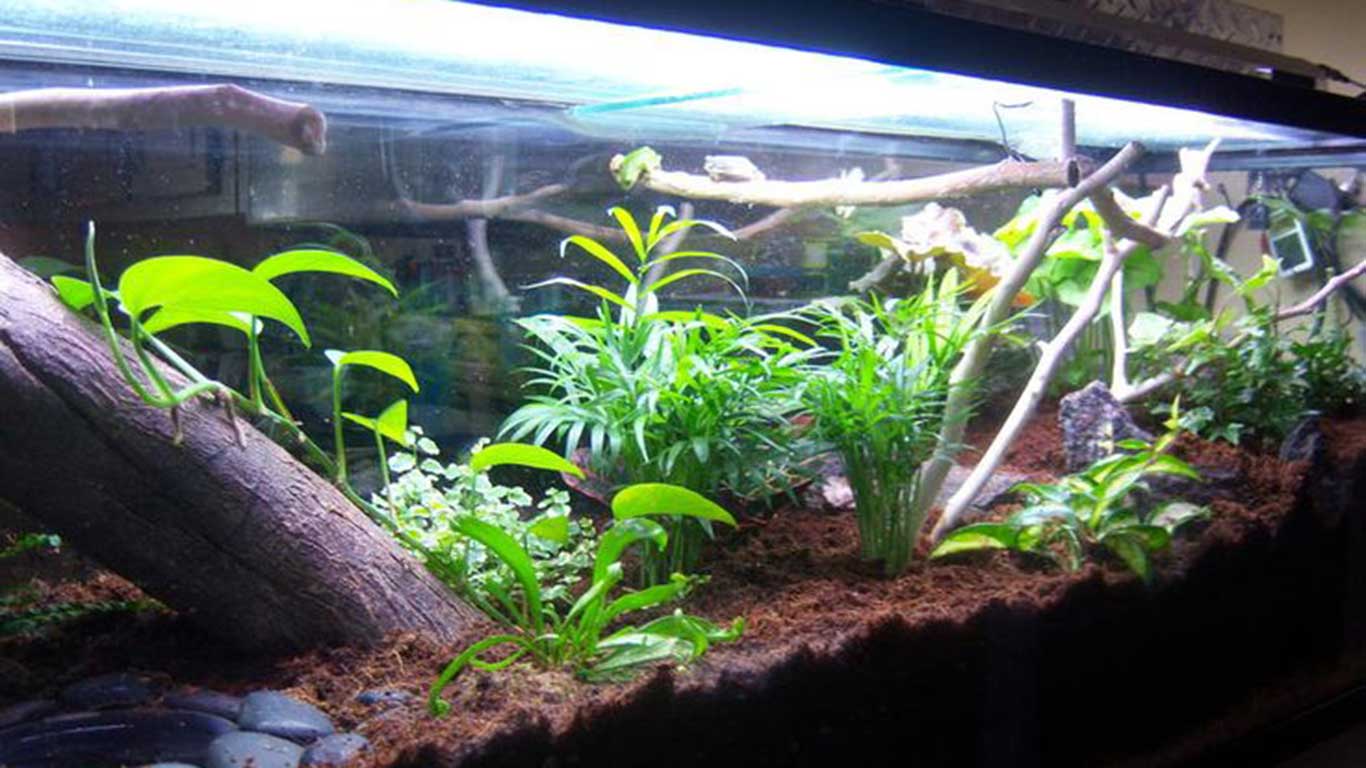
Choosing the Right Enclosure
To provide a comfortable and suitable habitat for your green tree frogs, choosing the right enclosure is crucial. The recommended minimum size for up to four adult green tree frogs is a 15-gallon glass tank. It is important to give your frogs ample space to move and climb, so the tank should be tall with plenty of vertical height.
The enclosure should be well-ventilated to ensure proper air circulation. This helps maintain a healthy environment for your frogs and prevents the buildup of harmful bacteria or odors. Make sure to have a screened lid on the tank to prevent any accidental escapes while still allowing for airflow.
When setting up the enclosure, it is beneficial to provide the largest habitat possible. This gives your frogs more room to explore and adds to their overall comfort. Creating a spacious and stimulating environment helps mimic their natural habitat and encourages natural behaviors such as climbing and leaping.
A spacious habitat allows for the addition of various elements, such as live or artificial plants, branches, and natural decors. These additions provide hiding spots, visual barriers, and climbing opportunities for your green tree frogs. It is important to create a diverse and enriching environment that caters to their natural instincts.
Remember, choosing the right enclosure is the foundation for a healthy and happy habitat for your green tree frogs. By providing the appropriate size, ventilation, and space for climbing, you can create an optimal living space that promotes their well-being.
Temperature
Proper temperature is crucial for the well-being of your green tree frogs. Creating a suitable thermal gradient within their enclosure is essential to mimic their natural habitat. It is recommended to maintain nighttime temperatures between 65-68°F and daytime temperatures between 72-80°F.
To ensure the temperature remains within the desired range, it is essential to check the habitat’s temperature daily. Use thermometers placed in both the warm and cool areas of the enclosure to monitor the temperature accurately.
By providing appropriate heat levels, you can help your green tree frogs regulate their body temperature and thrive in their habitat.
Recommended Temperature for Green Tree Frogs
| Temperature | Daytime | Nighttime |
|---|---|---|
| Ideal Range (°F) | 72-80 | 65-68 |
As ectothermic animals, green tree frogs rely on external heat sources to maintain their body temperature. Providing the correct temperature range ensures their physiological processes function optimally and promotes their overall health and well-being.
Light & Heat Sources
Green tree frogs are nocturnal creatures, but they still require regular exposure to light in order to maintain a healthy day and night cycle. A fluorescent bulb is recommended to provide 10-12 hours of light per day in the frog’s habitat. This helps replicate natural lighting conditions and supports their overall well-being.
Moreover to light, green tree frogs also need a reliable heat source to regulate their body temperature. There are a few options you can consider:
- Low-watt incandescent bulb: This type of bulb emits a gentle heat that can be beneficial for your frog’s habitat.
- Under-tank heating pad: Placing a heating pad beneath the tank can provide warmth from below, creating a comfortable environment for your green tree frog.
- Ceramic heat emitter: This heat source does not emit light and is perfect for maintaining optimal temperatures without disturbing the frog’s nocturnal habits.
It’s important to carefully monitor the temperature within the habitat to ensure the well-being of your green tree frog.
Remember, providing the right light and heat sources is crucial for creating a suitable habitat for your green tree frog’s overall health and happiness. Let’s take a look at an example setup:
Habitat Setup Example
| Light Source | Heat Source |
|---|---|
| Fluorescent bulb (10-12 hours per day) | Low-watt incandescent bulb |
| Under-tank heating pad | |
| Ceramic heat emitter |

Humidity
Proper humidity levels are crucial for the health and well-being of green tree frogs. These amphibians thrive in environments with humidity levels between 70-90%. Maintaining the correct humidity range is vital to ensure that your green tree frogs can breathe properly, shed their skin effectively, and stay hydrated.
One way to monitor humidity levels in your green tree frog habitat is by using a hygrometer. This handy device measures the amount of moisture in the air, allowing you to adjust humidity levels accordingly. Place the hygrometer in an area of the enclosure where the frogs spend most of their time to get an accurate reading.
To provide moisture for your green tree frogs, a shallow bowl of dechlorinated water should be available at all times. The water should be about 1-2 inches deep, allowing the frogs to drink and soak as needed. Ensure that the water is changed regularly to keep it clean and free from contaminates.
Moreover to the water bowl, you can help maintain humidity levels by misting the habitat once or twice a day. Use a gentle misting spray bottle to create a fine mist that settles in the enclosure. Alternatively, you can consider using a terrarium humidifier for a more automated approach. Misting the habitat not only increases humidity but also provides the frogs with a source of drinking water through droplets on leaves and surfaces.
Live plants can also contribute to maintaining proper humidity levels in the green tree frog habitat. As the plants release moisture through transpiration, the surrounding air becomes more humid. Opt for plants that thrive in high-humidity environments, such as pothos or bromeliads, and arrange them strategically in the enclosure.
Remember to regularly monitor the humidity levels in the green tree frog habitat and make adjustments as necessary. Creating a consistently humid environment will help ensure the health and well-being of your green tree frogs.
Join the Pet Planet Diaries
Sign up for our newsletter to get the latest tips, stories, and exclusive insights into the wonderful world of pets.
Substrate & Decor
Creating a suitable habitat for your green tree frogs involves choosing the right substrate and providing appropriate decor. These elements contribute to the comfort and well-being of your frogs, allowing them to thrive in their environment.
Substrate
Your green tree frogs have delicate skin that needs to stay moist. To create a suitable substrate, you can use the following options:
- Damp Sphagnum Moss: This natural moss retains moisture well and provides a soft surface for your frogs to rest on.
- Coconut Fiber: Also known as coconut coir, this substrate is an excellent choice as it helps to maintain humidity and allows for natural burrowing behavior.
- Large River Rocks: If you prefer a more natural look, large river rocks can be used as a substrate. Ensure that the rocks are cleaned and do not have sharp edges that can harm your frogs.
It is important to avoid using gravel, pieces of bark, or rough surfaces that can be swallowed or damage their sensitive skin.
Decor
Furthermore to the substrate, providing appropriate decor is essential for your green tree frogs’ habitat. The following items can be used to create an engaging and stimulating environment:
- Climbing Plants: Live or artificial plants can be placed in the enclosure, allowing your frogs to climb and explore. Ensure that any live plants are non-toxic to your frogs.
- Driftwood: Adding driftwood not only creates a natural aesthetic but also provides vertical climbing opportunities.
- Branches: Sturdy branches can be strategically placed to create additional climbing and hiding opportunities for your frogs.
It is important to create a visual barrier and provide hiding areas within the habitat to make your green tree frogs feel secure and safe.

The Lily Pad Landing: Final Thoughts
In the end, creating a suitable habitat for American green tree frogs involves providing the right enclosure, temperature, humidity, light, substrate, and decor. By following these guidelines, you can create a healthy and comfortable habitat for your American green tree frogs at home.
Firstly, it is crucial to ensure that you choose the right enclosure for your green tree frogs. A 15-gallon glass tank is recommended as the minimum habitat size for up to four adult frogs. The tank should be tall with plenty of vertical space for climbing, and a well-ventilated, screened lid to prevent escape.
Secondly, maintaining the proper temperature and humidity levels in the habitat is essential for the well-being of your green tree frogs. The recommended temperature ranges from 65-68°F at night to 72-80°F during the day. Humidity levels should be maintained between 70-90%. Regular monitoring of these factors and adjusting them as necessary is crucial for the frogs’ health.
Lastly, providing suitable substrate and decor is important to ensure the comfort of your green tree frogs. Damp sphagnum moss, coconut fiber, or large river rocks can be used as substrate, while live or artificial plants, driftwood, and branches can be added for climbing and hiding. It is important to avoid rough surfaces that may damage their sensitive skin. Additionally, maintaining proper hygiene and cleanliness in the habitat and providing a balanced diet of insects will contribute to the overall well-being of your American green tree frogs.
FREQUENTLY ASKED QUESTIONS
Where can I find American green tree frogs?
American green tree frogs can be found near bogs, ponds, and streams throughout the southeastern United States.
What do American green tree frogs look like?
American green tree frogs have a white underside and a pale-yellow stripe running from the side of their face to their rear legs.
How long do American green tree frogs live?
American green tree frogs have an average lifespan of up to 6+ years with proper care.
How big do American green tree frogs get?
American green tree frogs typically reach a size of 1-3 inches in length.
Are American green tree frogs poisonous?
No, American green tree frogs are not poisonous.
Are American green tree frogs beginner-friendly pets?
Yes, American green tree frogs are considered beginner level pets and are relatively easy to care for.
What is the recommended size for an American green tree frog habitat?
The recommended minimum habitat size for up to 4 adult green tree frogs is a 15-gallon glass tank.
What type of enclosure should I choose for my American green tree frogs?
It is important to choose a 15-gallon glass tank as the minimum recommended habitat size for up to four adult green tree frogs. The tank should be tall with plenty of vertical space for climbing.
How should I maintain the temperature in the habitat?
Green tree frogs require a thermal gradient in their enclosure, with nighttime temperatures between 65-68°F and daytime temperatures between 72-80°F. It is important to check the temperatures of the habitat daily using thermometers placed in both the warm and cool areas.
What light and heat sources should I provide for my American green tree frogs?
A fluorescent bulb providing 10-12 hours of light per day is recommended for maintaining a healthy day/night cycle. Additionally, a low-watt incandescent bulb, under-tank heating pad, or ceramic heat emitter can be used to supply radiant heat in the frog’s habitat.
How do I maintain the humidity in my American green tree frog habitat?
Green tree frogs require humidity levels between 70-90%. It is recommended to have a hygrometer to monitor humidity levels. Misting the habitat once or twice a day with a gentle misting spray bottle or using a terrarium humidifier can help maintain humidity levels.
What should I use as substrate and decor in the habitat?
Damp sphagnum moss, coconut fiber, or large river rocks can be used as substrate in their tank. Climbing decor like live or artificial plants, driftwood, and branches should be provided for the frogs to climb and leap from. A visual barrier and hiding areas should also be included in the habitat.


